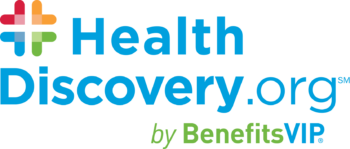All forms of literacy are important (you’re reading this, aren’t you?) but there’s a renewed focus on health insurance literacy as part of benefits literacy. Just having health insurance can help provide important medical care and prevent runaway bills, but learning how to use your insurance effectively can lead to both better and more cost-effective health care. Learning a few key terms and concepts can unlock health insurance literacy.
Key Needs
While worth learning, health insurance is undeniably complicated. If your plan seems confusing and overwhelming, you’re not alone. A 2019 study found that over half of U.S. adults had “low knowledge about basic health insurance terms and had difficulty using health insurance to access needed health care services.”1
This lack of health insurance literacy can lead to higher costs and less care.
This lack of health insurance literacy can cost the consumer money, cost their employer money, lead to increased monthly premiums and most seriously, result in inadequate or delayed health care. The results of one study suggested that lower health insurance literacy may lead to avoiding necessary and preventative care.2 Delayed medical care can worsen conditions or lead to new ones.
Key Terms
Health insurance literacy begins with choosing the right plan, but there are several fundamental concepts to understand first. These terms define the participant’s relationship to the plan—that is to say, what the participant covers and what the insurer covers.
Premium is the amount you pay the insurance company each month for coverage.
Deductible is the amount you pay for healthcare expenses before insurance kicks in. Typically, insurance plans are based on yearly deductible amounts.
Premium and deductible amounts often oppose each other. A plan with a higher premium will often have a lower deductible while a plan with a lower premium will often have a higher deductible.
Copayment is a flat fee you pay for healthcare services in addition to what the insurance covers.
Coinsurance is how much you are required to pay for services after you reach your deductible, often a percentage. The plan covers the remaining amount.
Deductibles, copayments and coinsurance are forms of “cost sharing” or “out-of-pocket” costs, essentially what the participant, not the plan, pays toward covered medical expenses.
Out-of-pocket limit – this is an important number as it defines the most you could pay in a plan year for covered, in-network services. Premiums do not count toward out-of-pocket limits.
Key Thresholds
For most plans, there will be two annual thresholds: the deductible and the out-of-pocket limit.
From $0 to deductible: Participant pays most or all, plan pays little.
Before the deductible amount is met, the participant pays most or all costs before the plan begins to pay, depending on the plan and service. Some in-network services, like routine physicals, may be 100% covered before reaching the deductible, while others may require a copay. For most services, the plan may not contribute at all before the deductible is met. You can find these details in your plan’s Summary of Benefits and Coverage (SBC).
From deductible to out-of-pocket limit: Participant pays less, plan pays more.
Once the participant has paid for medical costs up to the set deductible, the plan then pays more or most of covered services. Instead of the participant paying the entire bill as before the deductible, they just pay a copay or coinsurance. The plan covers the rest. For example, with 20% coinsurance on a $100 bill, the participant would pay $20 and the plan $80.
Out-of-pocket limit and beyond: Participant pays nothing, plan pays all.
Once the out-of-pocket limit is reached, the insurer contributes 100% of the cost for covered, in-network services.
These thresholds often only apply to in-network coverage and reset every plan year. If your plan renews on January 1 and you go to the doctor on January 2, the amount paid toward your deductible is back to zero, even if you had met the deductible back on December 31.
Key Choices
With the basics covered, it’s time to choose a plan. Depending on the plan options offered by the Healthcare.gov Marketplace or your employer, the choice may not always be as straightforward as it appears. Once you’ve received information on the available plans through open enrollment meetings, a benefits guide, and other sources, you need to evaluate the specifics of each plan based on your and your family’s medical situation.
The basic costs of health plans come from the cost of the plan itself (monthly premium) and the cost of healthcare services (cost sharing). Choosing the right health plan is not just about how much you spend. It’s also about where you spend.
The best plan for your family is on that balances your preferences with how much you can and expect to spend in the coming year. This means you need to decide on that total: the annual cost of the monthly premiums and how much you expect to spend on health care. When deciding which plan is right for you:
- Estimate next year’s healthcare expenses. Start with this year’s expenditures. How much did you spend on prescriptions, doctor visits, and preventative care?
- Understand your deductible. How much was your deductible this year? Did you meet it? If you had a higher deductible, would you have the cash reserves you’d need to meet it?
- Assess your annual cost. This is the amount you pay in monthly premiums regardless of how much you use your plan.
- Consider your coinsurance. The coinsurance is the portion you pay for healthcare services once you’ve met your plan’s deductible. Knowing this percentage is important for budgeting and comparing plans.
Your specific relationship with money, tolerance for risk and priorities will point you toward the right plan. Understanding both the logical and emotional elements of your health coverage will help you make the most of it.
Research shows that consumers often make mistakes when choosing between health insurance options. One study found that many employees chose the more expensive option, even when the cheapest plan would likely result in lower costs overall. This resulted in an average overpayment of $1,700 a year.3
Often, this is a case of overestimating healthcare costs or being intimidated by needing to fully pay for services before the deductible. This can lead to choosing plans with more expensive premiums to avoid this. However, when they calculate their actual medical costs and premium payments, they find that they would have saved more money on premiums with the cheaper plan than the extra money insurance contributed for their costs.
A predictable monthly cost can seem more appealing than the potential of an unknown medical bill, but be sure to consider your usage and choose the best plan for your situation.
Keys to Smart Use
- Review your summary of benefits and coverage (SBC) and explanation of benefits.
- Learn how to be a savvy healthcare consumer.
- Understand your plan’s cost sharing.
- Utilize telemedicine when appropriate.
- Shop around for prescription discounts.
- Avoid these common health insurance mistakes.
Contact your company’s employee advocacy service with any questions.
1 Health Literacy Research and Practice, “Significant Disparities Exist in Consumer Health Insurance Literacy: Implications for Health Care Reform”
2 JAMA Network Open, “Association Between Health Insurance Literacy and Avoidance of Health Care Services Owing to Cost”
3 TIAA Institute, “Overpaying and undersaving: Correlated mistakes in retirement saving and health insurance choices”














